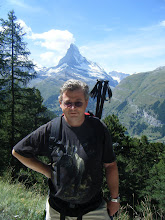Ich bin ein...
"There are many people in the world who really don't understand, or say they don't, what is the great issue between the free world and the Communist world," said President John F Kennedy, speaking in West Berlin in 1963, two years after the demarcation of the Berlin Wall. "Let them come to Berlin."
For all the charlatanism that may have come out of the west before and since that speech, it was fundamentally true, in that the contrast between West Berlin and East Berlin was stark. I know, I was there 10 years before the wall came down.
Of course, by then it had become policy to pour money into the West Berlin enclave (I use the word advisedly; we drove there from Hamburg on a designated road from which we could not deviate). This had the effect of making the distinction more artificially obvious - on one side a place teaming with traffic and commerce, while on the other grey sobriety and hushed, furtive, stillness. One might equally argue that, in that era, one could have gone to Chile or Indonesia - both allies of the West - and one would have witnessed even worse oppression (in iraq too, then an ally of the West). But then, on the other hand, the so-called Gherman Democratic Republic (DDR) was less poor and less oppressive than many other communist regimes of the era, such as Romania, China or Cambodia. In the end, however much one might be tempted to draw simplistic conclusions either way, the contrast going from the west to the East was stark.
I engaged in that political tract because I returned to Berlin last weekend with my offspring, for the second time since the wall came down. The last time was five years ago, when I stayed with a couple who were very much of the view that the wall was still there in all but name. Of course, this is a rhetorical overstatement. Nevertheless, when one gets away from the tourist and shopping districts between the Brandenburg Gate and the Alexander Platz, the legacy of the poverty and neglect of the DDR is apparent in the sombre, grimy buildings, the neglected papvements and the ubiquity of apartment blocks. Although the streets are teeming with life now, with the Trabant cars and propaganda posters replaced by commercial advertising and western cars, the shabbiness of the east still contrasts with the west.
That said, a lot of the outstanding sights are in the eastern sector, especially the Pergamon Museum - that monument to the 19th century Prussian fondness for plundering classical archaeological sites. Whole architectural structures from ancient Greece, Babylon and the Islamic Middle East were taken there and reconstructed indoors. There is also the Museum of the DDR - funny in many ways but ultimately chilling in terms of its recreation of the numbness of life in that era.
Of course, the other trauma that pervades Berlin is World War II and the preceding Nazi era. I had been warned that the Holocaust Memorial was just a bundle of blocks but when one goes far into it one can appreciate how it was intended to convey the oppressiveness of that awful time. People wander through the claustrophobic spaces talking and eating ice cream but that is how it should be.
Ultimately, I am moved at how Berlin - and the Berliners - have never failed to pick themselves up after each of the knocks of the 20th Century and invent themselves - and their culture - anew. That is the lasting message I take away from this wonderful city.


0 Comments:
Post a Comment
Subscribe to Post Comments [Atom]
<< Home